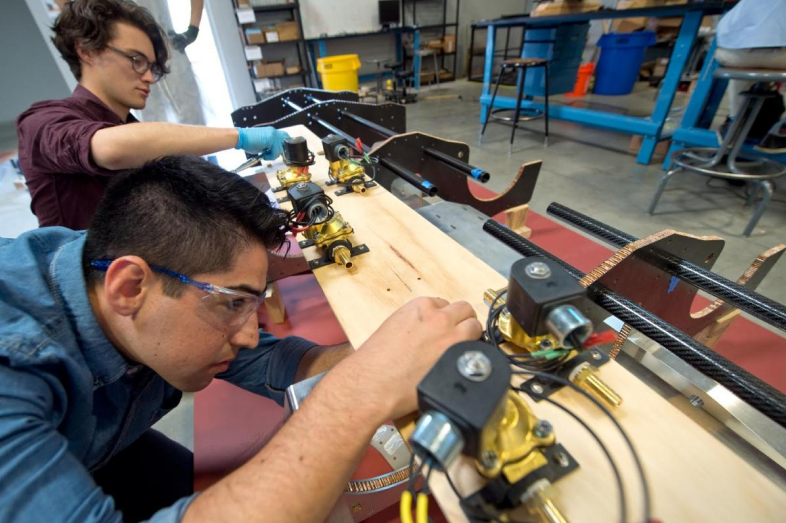

As part of an effort to boost the number of Latinos graduating with degrees in the STEM fields — science, technology, engineering and math — four universities will use a new federal grant to bring together experts closest to the issue to examine the challenges and brainstorm successful strategies.
The National Science Foundation has awarded the University of California at Irvine, the University of Arizona, the University of Houston and Nova Southeastern University in Florida each $100,000 to host the conferences.
The theme at the University of California at Irvine convening will be “Transition Points,” looking at how STEM majors transition from high school to college or transfer to the school from community college and why some Latino students choose to attend community college when they have the grades to attend an Ivy League school.
The conference is tentatively scheduled for spring 2018 and “conference attendees will develop recommendations for supporting students to successfully transition and graduate college in STEM majors,” said Patricia Harriman, a spokeswoman for UC Irvine.
UC, Irvine Named ’Hispanic Serving Institution
The announcement comes as the California campus was recently named a Hispanic Serving Institution, or HSI, a federal designation that means one-quarter of undergraduate students identify as Latinos. The HSI status also means more federal dollars can flow into the school to help support Latino students.
Last year, more than 1,800 Latino students graduated from UC Irvine with the top three majors identified as psychology and social behavior, criminology, law and society and education sciences. Total undergraduate enrollment at the university is 27,331.
Latinos struggle to persist in the STEM fields at the California university. Forty-two percent of non-Hispanic students who start as biological science majors earn a degree in that field, but only 24 percent of Hispanic students achieve the same result, according to UC Irvine data. For engineering, the gap is 11 percentage points fewer for Hispanics, and in the physical sciences 10 percentage points.
“Serving underrepresented students is a core part of [the university’s] mission and vision, and creating this HSI conference will bring together educational leaders to suggest best practices to NSF on how to support research for improving STEM pathways for Hispanic students,” said Michael Dennin, the vice provost for teaching & learning.
Hispanics account for 26 percent of student enrollment at UC Irvine, double the percentage from a decade ago. The campus received more Chicano/Latino freshman applications for the 2017-18 academic year (23,463) than any other University of California campus.
According to a white paper prepared for the Hispanic Association of Colleges and Universities in July 2012, “although Hispanic students have been shown to be equally likely as White students to major in STEM, they are significantly less likely to earn a degree or certificate in a STEM field.” The paper notes, that only 16 percent of Hispanic students who began college in 2004 as STEM majors completed a STEM degree by 2009, compared to 25 percent of white students.
From Arizona to Florida
Here’s a look at what the other universities have tentatively planned:
- The University of Arizona will hold its conference on Nov. 18-20 of this year. The university, which has roughly 33,000 undergraduates, is currently an ‘“emerging” HSI and will be applying for the designation in the fall, according to a statement by the university. “The conference will also serve as a platform for new and stronger institutional collaborations between UA and other HSIs.”
- Nova Southeastern University is partnering with Broward College, Miami-Dade College and Excelencia in Education, a Washington, D.C.-based nonprofit, to host its conference in December in Fort Lauderdale, Florida. After the event, Nova, which has about 4,600 students, will develop and maintain a listserve or mailing list to continue the collaboration. Broward and Miami-Dade both have high Hispanic enrollments.
- The University of Houston’s convening will have several goals in mind, including understanding the challenges facing HSIs and highlighting what research is available and area where further study is needed. In the fall of 2016, the university had about 43,700 undergraduates, 30 percent of them Hispanic.